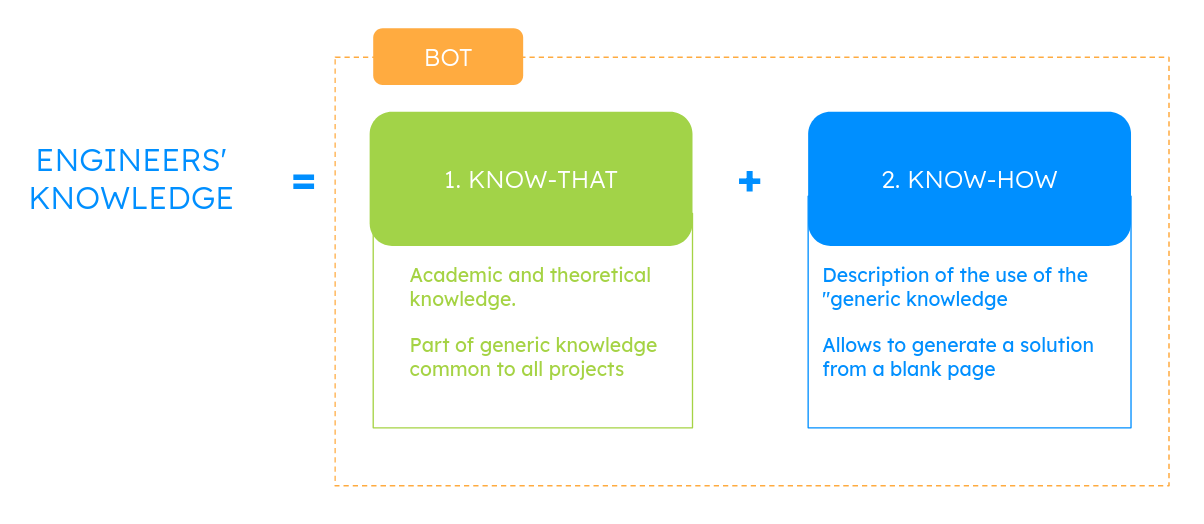What is a Bot
A bot refers to the digitalization of a business process, such as the generation of a 3D electrical wiring. Developing a bot involves two main tasks:
- Structuring the Know-That (generic knowledge)
- Definition of the Know-How (how engineer work)

The Know-That refers to the transversal knowledge of the engineers on a given topic. In our example, it corresponds to the way in which the business explains its way of structuring an electrical wiring, as well as the set of business rules.
The Know-How explains how the engineers use the Know-That to start from scratch and design a 3D electrical wiring.
Dessia proposes a framework based on these two central elements:
- The SDK, which allows for the simplified description of the Know-That of the engineers using Python.
- The Workflow Builder, which allows for the description of the Know-How using a Workflow-type approach.
Bots can be developed for a wide variety of use cases, without any limitations. Dessia's philosophy is to propose an engineering approach where bots and engineers coexist: the bot is a tool for engineering that allows for finding an optimal solution or defining a trade-off.
1. Know-That
The Know-That (generic knowledge) is central to this strategy of knowledge structuring. Generally, this generic knowledge can be found in different places in engineering departments:
- Word-type knowledge document
- Internal Wiki explaining the business rules
- Knowledge transmitted orally
Dessia proposes a generic SDK that allows for writing this knowledge from a low-code approach. This approach is based on the object-oriented formalism of Python. In summary, we propose an SDK that allows for describing the engineering in a way similar to the approach of a computer developer structuring his code with an object-oriented approach.
Dessia's approach is based on the UML formalism and aims at proposing a generic implementation of the MBSE for engineering by integrating the two central dimensions:
- Functional description
- CAD description (3D)
2. Know-How
The Know-How allows to explain the way engineers use the generic knowledge to achieve a given task.
Dessia proposes a Workflow-like description language to explain, block by block, the way engineers implement their generic knowledge. Taking the example of electrical wiring, here is a possible succession of tasks:
- Mesh the available space
- Draw a first concept from the neutral fiber
- Apply business rules to generate a realistic cabling
- Determine the optimal solution by considering trade-offs
For a given generic knowledge, several Know-Hows are possible. Indeed, depending on the engineers' wishes, sub-workflows can be imagined.
3. Development
It is important to mention that depending on the digitized process, the bot may require more or less effort to implement:
- Simple bot: digitization of a simple task (development time of a few hours)
- Intermediate bot: digitization of a specific job
- Complex bot: assembly of several bots